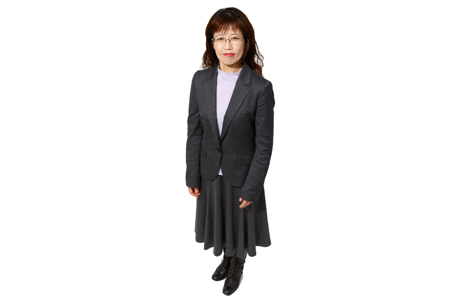SUZUKI Mika

- 役職/
Position - Professor at Institute of Japan Studies
- 研究分野/
Field - Japanese Language Education / Educational Technology
Teaching the Japanese language opens your eyes to new perspectives
I am in charge of the Career Program's Japanese language teaching practice studies. This course is open to graduate school students who are not in the Master's Program in Japan Studies. The purpose of this course is to equip students with the basics of Japanese language teaching, so that they can provide appropriate support if and when they are asked to help out with a Japanese language class in their study abroad destinations.
This course gives students exposure to Japanese as a second language or as a foreign language, and their teaching methods, and develops students' objective viewpoint of the Japanese language. Students who take this course will attend Japanese language courses for international students, as well as plan and conduct mock courses. This course delves into the Japanese language learning process and can also contribute to students' research. I imagine that this course will provide students with an opportunity to make many discoveries.
My research theme is analysis of Japanese reading comprehension processes, and development of teaching materials to sharpen reading comprehension skills. Japanese consists of many parts. There are over 80 hiragana and katakana letters, respectively, including voiced and palatalized syllables, and 2,136 commonly used kanji characters. In addition, the percentage of vocabulary in general books and newspapers covered by 2,000 basic words is lower for Japanese compared with other languages. For example, in the case of English, an understanding of 2,000 basic words provides 87% coverage of vocabulary in general magazines. On the other hand, in the case of Japanese, it only covers 70%, meaning that comprehension requires close to three times more words. There are learners who have nightmares about Japanese language characters that resemble strange insects and their series.
How a text is read varies by the type of text, for example, whether it is a narrative or an expression of opinion. In the middle of reading, sometimes you can predict how the story will end or sometimes you can gain a deeper understanding. At other times you cannot. I also study what factors are linked to these differences.
Based on these studies, I develop teaching materials to help improve reading comprehension. Even if words are inputted into your memory fragmentarily, you may not be able to remember the full content of the sentence. To aid comprehension in these instances, I am developing study materials that utilize collocation (combination of frequently used terms).
For example, when Japanese people see the word "ayamaru" (to apologize), images of people apologizing or words like "gomennasai" (I am sorry) come to their minds unconsciously. The word "kokuhaku suru" (to confess/declare) is associated with confessing something that is serious and difficult to say in words--a typical example is professing one's love for another. I create teaching materials that connect these images that tend to be associated with words. These materials will help speed up language processing and help Japanese learners understand text and sentences as a whole.
International students studying Japanese for the first time sometimes experience anxiety. Even if it is only incrementally, having a series of exchanges in Japanese will open up the possibilities of international students, allowing them to show their true selves. This will also create a positive cycle by advancing their learning process. I hope my course will serve as an opportunity for you to discover the excitement of teaching this interesting language.




